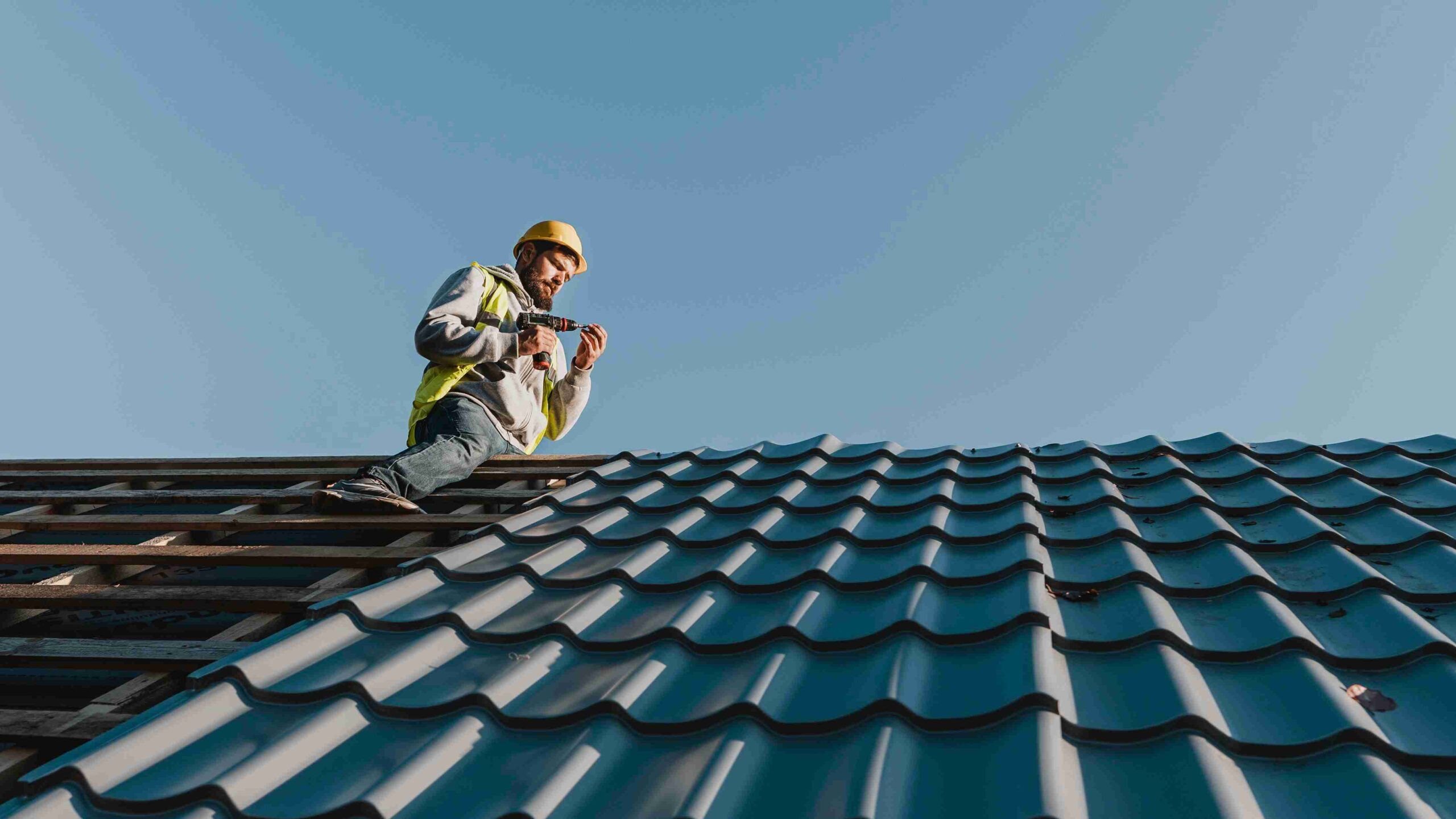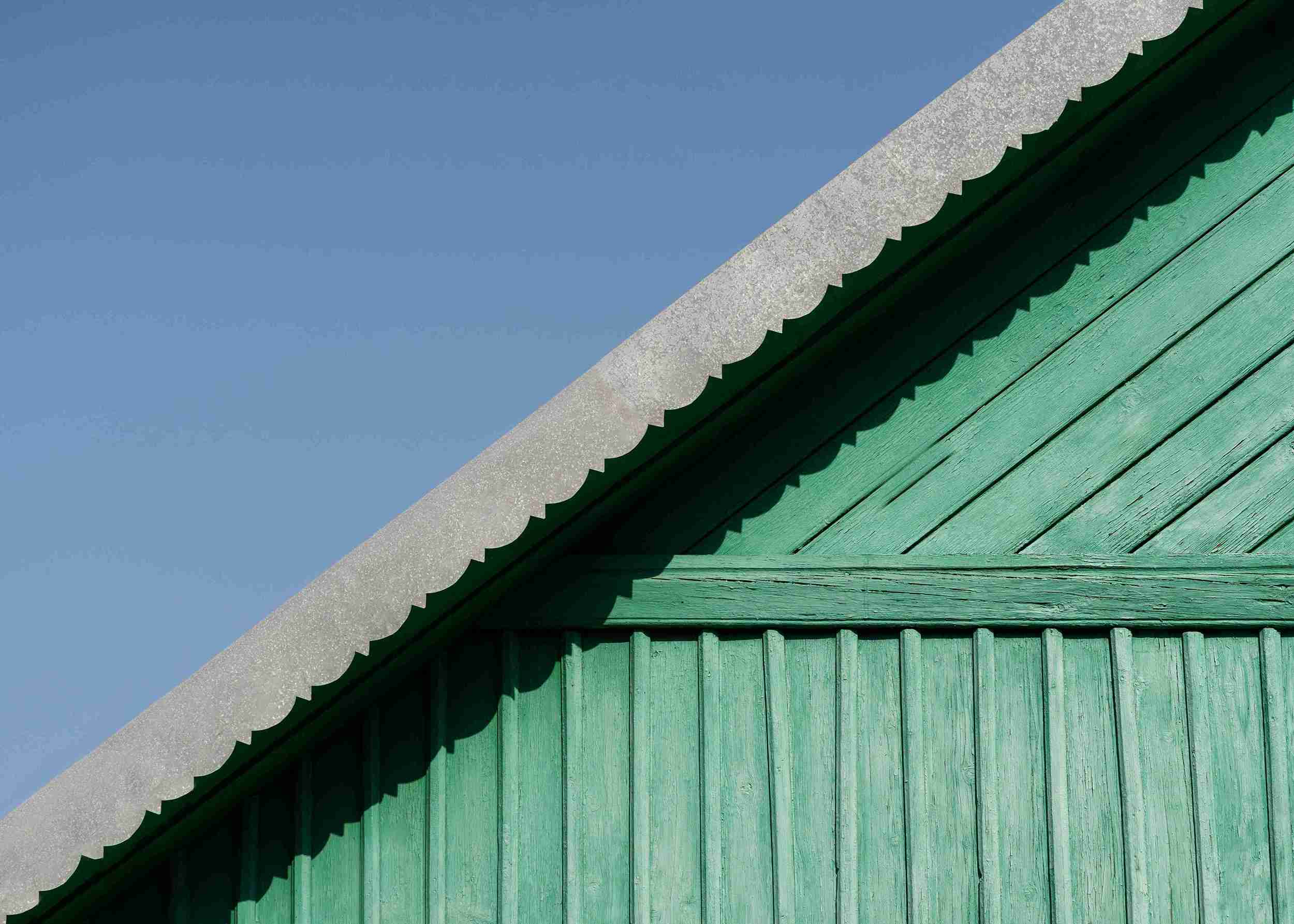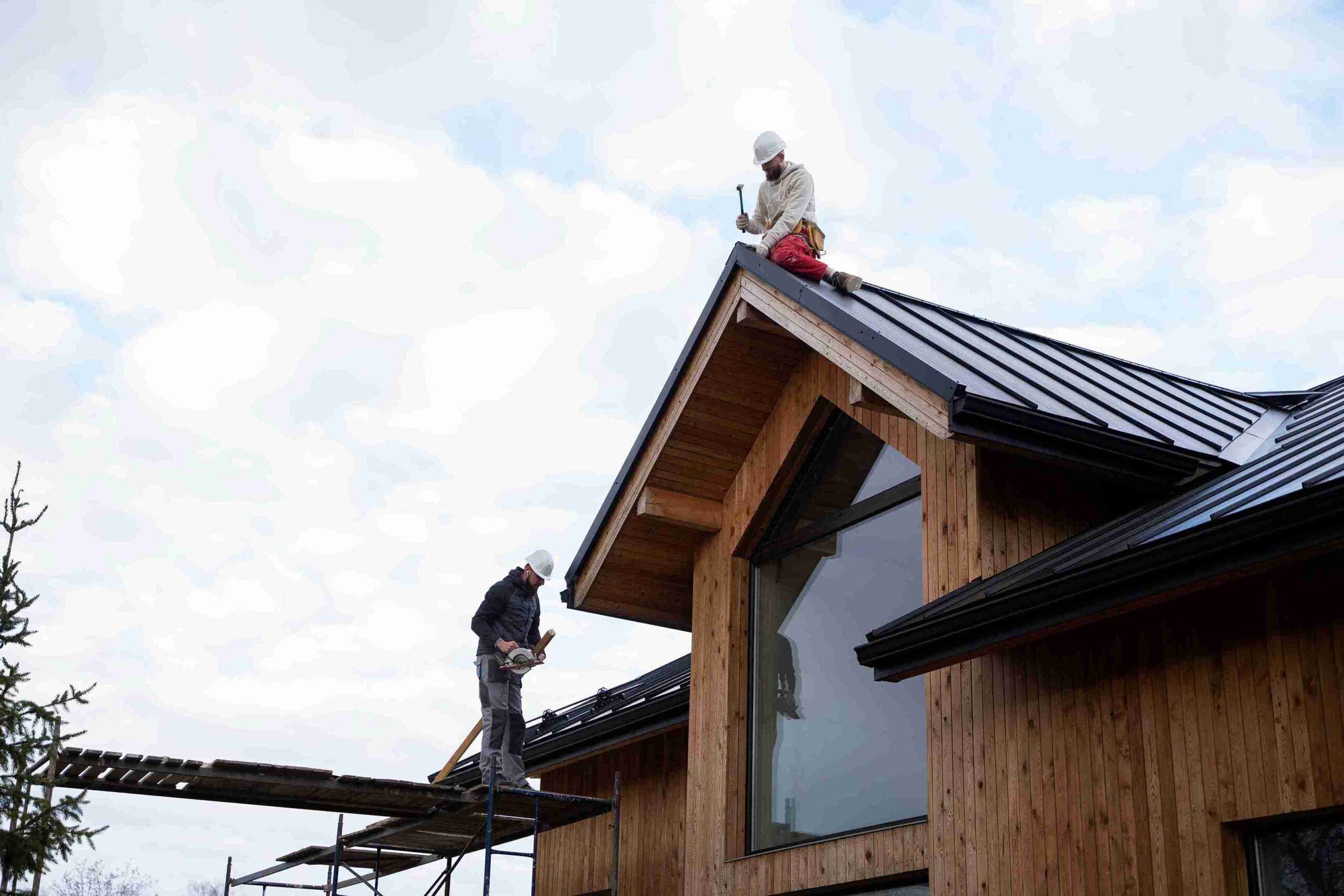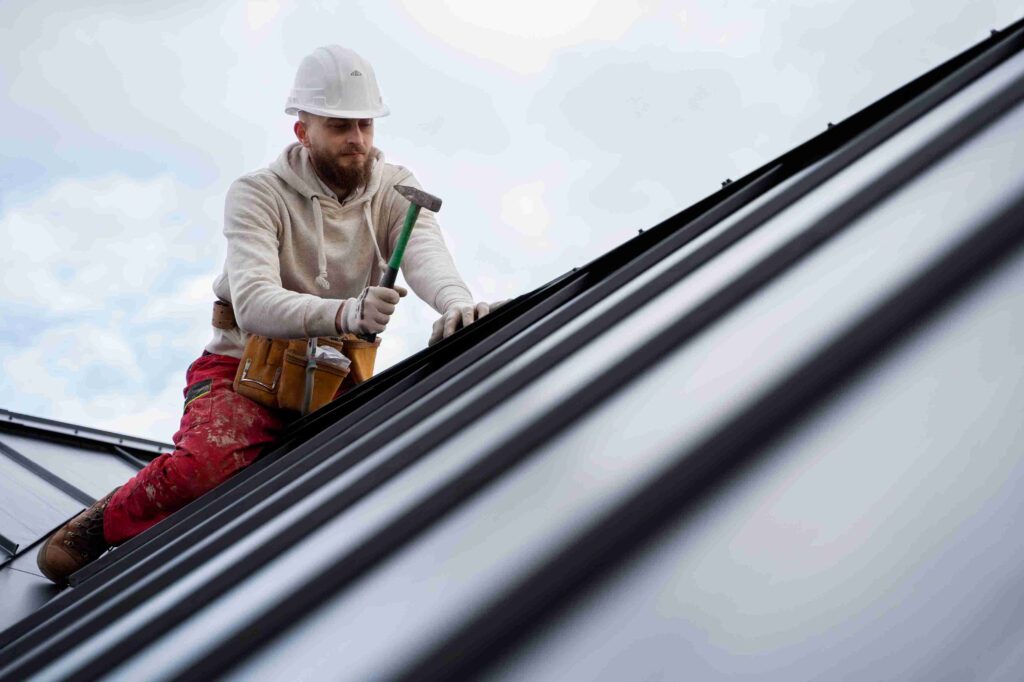Table of Contents
Key Takeaways✔ If a roof is approaching the end of its lifespan, replacement is often more practical than continuing to patch aging materials. ✔ When roof damage is widespread or structural, repair is rarely sufficient and replacement becomes the safer solution. ✔ Persistent or multiple leaks usually indicate deeper water damage, making full roof replacement a smarter long-term fix. ✔ While repairs may seem cheaper upfront, frequent fixes can add up quickly, making replacement more cost-effective over time. ✔ A damaged or outdated roof can reduce energy efficiency, so replacing it may lead to better insulation and lower utility bills. ✔ A new roof improves the overall appearance and marketability of a home, while mismatched patches can hurt its curb appeal. ✔ Homeowners planning to stay long-term should consider replacement, while those selling soon may opt for limited repairs. ✔ Insurance policies and warranty terms often determine whether repair or replacement is covered, so reviewing both is essential before deciding. |
When a roof shows signs of wear or damage, homeowners are often left wondering: Should I repair or replace my roof? Choosing between roof repair and replacement isn’t always easy. While a minor leak may warrant a simple patch, more serious structural issues could mean it’s time to call in a roof replacement service.
Here are the eight key factors that help determine whether roof repair vs replacement is the better option.

1. Age of Your Roof
The age of a roof is one of the clearest indicators of whether repair or replacement is the smarter choice. Roofing materials naturally degrade over time, even without visible damage. When evaluating roof repair vs replacement, age isn’t just about years—it’s about performance. Roof replacement service is often a proactive move that saves homeowners from emergency repairs and structural damage down the line.
Typical Lifespans by Material
- Asphalt Shingles (15–30 years): Most common for residential homes. As they near the 20-year mark, granule loss, curling edges, and brittle shingles may appear, indicating reduced protection.
- Metal Roofing (40–70 years): Known for longevity, but exposure to salt air, hail, or improper installation can shorten its life.
- Clay or Concrete Tile (50+ years): Extremely durable. However, the underlayment beneath tiles often needs replacement after 20–25 years, even if tiles look intact.
- Wood Shakes (20–40 years): Natural aesthetic appeal, but prone to weathering, moss growth, and moisture damage—especially in humid climates.
- Slate (75–100 years): Long-lasting but very heavy and requires a reinforced structure. If a slate roof fails prematurely, it’s often due to flashing or improper installation rather than the stone itself.
What to Watch for as Your Roof Ages
- Frequent Repairs: An older roof needing constant patchwork is often beyond its serviceable life.
- Outdated Materials: Some older roofs have materials or techniques that are no longer code-compliant or insurable, prompting full replacement.
- Loss of Manufacturer Warranty: Many roofing warranties expire around 25–30 years. Without coverage, replacement becomes more practical than risking out-of-pocket repair costs.
2. Extent of Damage
The amount and severity of visible and hidden damage is another crucial consideration. While some issues can be addressed quickly, others indicate a failing system. A trusted roof repair and replacement expert should assess the extent of the damage. In many cases, extensive deterioration can’t be addressed with surface-level solutions. This makes roof repair or replacement an urgent and informed decision rather than a guess.
Repairable Damage (Ideal for Targeted Fixes)
- Loose or Missing Shingles: Small patches of shingle damage caused by wind or debris can usually be replaced.
- Isolated Flashing Damage: If flashing around vents or chimneys is cracked or loose, it can be repaired without disturbing the rest of the roof.
- Minor Punctures: Small holes from branches or wildlife can be sealed if detected early.
Signs That Indicate the Need for Replacement
- Sagging Roof Deck: Suggests underlying structural failure, often caused by prolonged water exposure or rot.
- Widespread Shingle Deterioration: Missing granules, cracking, or curling over large areas indicate advanced wear and tear.
- Rotting or Moldy Underlayment: A failing underlayment compromises the entire roofing system. Replacement is usually the only viable solution.
- Multiple Layers of Past Repairs: Layering new shingles over old ones may hide deeper problems. Most building codes allow only two layers—beyond that, full removal and replacement are required.
3. Roof Leaks and Water Damage
Water intrusion is one of the most visible and damaging issues a roof can present. Water damage can go unnoticed for months. By the time stains appear indoors, internal damage is often extensive. When homeowners ask, should I repair or replace my roof because of water intrusion, the right answer depends on whether the issue is contained or systemic.
A roof replacement service may seem like a bigger investment initially, but it can prevent far costlier interior repairs, mold remediation, or even home insurance claims.
When Repair Is Sufficient
- Small, Isolated Leaks: Often caused by lifted shingles, cracked flashing, or loose fasteners. These can usually be sealed or replaced without extensive work.
- Blocked Gutters: Overflow due to debris may cause water to back up under shingles. Clearing gutters and resealing flashing typically solves the issue.
When Replacement May Be Necessary
- Recurring Leaks in Multiple Areas: Indicates a failing water barrier, not just a one-time breach.
- Ceiling Stains, Mold, or Mildew: These signs mean water has penetrated insulation or drywall, often pointing to prolonged exposure.
- Rotted Roof Deck or Rafters: Once structural elements are compromised, the roof system loses its integrity. Full replacement is the only safe option.
4. Cost of Investment
While repairs may seem more budget-friendly upfront, they aren’t always the most cost-effective solution in the long run. Comparing roof repair vs replacement requires a broader view that considers ongoing costs, expected lifespan, and the potential for added value.
When facing the roof repair or replacement decision, it’s not just about price—it’s about performance, protection, and predictability over time. A roof that no longer offers reliability becomes a hidden liability.
Typical Cost Breakdown
- Roof Repair: $1,152 on average and normal range around $392 to $1,929, depending on the type and extent of the damage. Ideal for quick, one-time fixes like a few missing shingles or sealing a minor leak.
- Roof Replacement: $9,517 on average with normal range of around $5,867 and $13,210, depending on the size of the roof, materials used, slope, and labor costs. It includes removal of the old roof, inspection of decking, and installation of a new system with modern components.
Factors That Influence Cost-Effectiveness
- Frequency of Repairs: Repeated service calls and temporary fixes add up over time. Multiple repairs per year can surpass the one-time cost of a new roof.
- Warranty Coverage: Many roof replacement service packages include long-term manufacturer and labor warranties, offering better value than repeated out-of-pocket repairs.
- Future Insurance Claims: Insurance companies may deny claims if a roof has had numerous patchwork repairs and is considered poorly maintained. A replacement can restore eligibility for better premiums or coverage.
- Property Value Impact: A newly replaced roof can boost the home’s market value and attract higher offers when selling. In contrast, a patchy, visibly worn roof may reduce perceived worth.
5. Energy Efficiency Concerns
A roof isn’t just a weather barrier—it also plays a major role in how efficiently a home maintains its internal temperature. Older roofs or damaged materials can lead to energy loss, which is both costly and uncomfortable. In the debate of roof repair vs replacement, energy performance is a frequently overlooked—but highly impactful—factor.
Ways a Roof Affects Energy Efficiency
- Shingle Condition: Deteriorated shingles may no longer deflect sunlight properly, leading to heat absorption in the attic and upper floors.
- Ventilation Efficiency: Poor ventilation traps hot air in summer and condensation in winter, forcing HVAC systems to work harder. Improve your home’s ventilation by introducing fresh air, using air filters, and optimizing air circulation with a reliable roof.
- Insulation Performance: Damaged decking or underlayment allows conditioned air to escape and outside air to infiltrate.
Benefits of a Roof Replacement
- Modern Materials: Reflective or energy-rated shingles help maintain stable interior temperatures by deflecting UV rays.
- Improved Ventilation Systems: Ridge vents, soffit vents, and attic fans can be incorporated during a replacement to ensure airflow efficiency.
- Radiant Barriers: Installing radiant barriers under the roof deck can significantly reduce heat transfer in warm climates.
When to Reconsider Repairs
If a roof is already older and energy bills have consistently climbed, roof repair and replacement options should be reviewed with efficiency in mind. Investing in a roof replacement service may yield monthly utility savings that offset the initial cost.

6. Aesthetic and Curb Appeal Goals
Curb appeal matters—whether for personal satisfaction or property resale. A worn, patchy, or visibly aged roof can make an otherwise well-kept home look neglected. If you’re wondering, should I repair or replace my roof before listing your home, aesthetics alone may justify replacement. In highly competitive markets, this can make a noticeable difference in both the speed of sale and the selling price.
Challenges With Repair-Only Approaches
- Mismatched Shingles: It’s often difficult to find a perfect color or texture match with existing roofing, especially if the current roof is weathered.
- Visible Patchwork: Repairs may look obvious and uneven, drawing attention to prior damage rather than concealing it.
- Algae and Discoloration: Replacing small sections doesn’t address widespread streaking or staining caused by moisture or organic growth.
Advantages of Full Replacement
- Consistent Appearance: A new roof offers clean lines, uniform color, and symmetry across all roof planes.
- Resale Value Boost: Prospective buyers see a new roof as one less thing to worry about. It signals that the home has been well cared for.
- Stronger First Impressions: Real estate agents often highlight a new roof in listings. It sets the tone for the rest of the home tour.
7. Upcoming Plans for the Property
How long a homeowner plans to stay in the home significantly impacts the roof repair vs replacement decision. Your timeline determines the return on investment and how much durability you really need. Ultimately, in the roof repair or replacement decision, your personal and financial plans should guide your choice.
When Staying Long-Term (10+ Years)
- Maximize Lifespan: A full roof replacement ensures structural integrity and protection for decades, minimizing disruption from future repairs.
- Avoid Future Costs: Investing in a roof replacement service now reduces the likelihood of unexpected maintenance down the line.
- Support Other Renovations: Planning home additions, solar panels, or attic upgrades? A new roof ensures compatibility with these long-term improvements.
When Planning to Sell Soon (1–2 Years)
- Get Through Inspection: If the current roof is functional and leak-free, a small repair may suffice to pass inspection.
- Avoid Over-Investing: Minor fixes may be more appropriate if buyers are likely to renovate or if the market doesn’t demand high-end updates.
- Anticipate Buyer Requests: Buyers may negotiate for credits or repairs if the roof looks aged. Replacing it upfront can simplify closing and support higher asking prices.
- Financing and Insurance Hurdles: Some lenders or insurers may require roof updates as a condition for loan approval or coverage, making preemptive replacement a selling advantage.
8. Insurance and Warranty Coverage
Coverage from insurance and warranties can heavily influence whether a homeowner opts for roof repair vs replacement. Understanding the fine print can save thousands. In some cases, insurance will pay for a full roof replacement service if the damage is substantial enough. In others, it may only cover repairs. Be sure to consult both your insurance provider and roofing contractor to determine which option is financially supported.
What Homeowners’ Insurance Typically Covers
- Covered: Sudden damage from hail, windstorms, falling trees, or fires.
- Not Covered: General wear and tear, neglect, or damage due to aging materials.
Steps to Maximize Insurance Coverage
- Document Damage Thoroughly: Take high-resolution photos of both exterior and interior damage.
- File Promptly: Delays can lead to claim denials or reduced payouts.
- Get a Certified Inspection: A report from a licensed roofer strengthens your case and ensures the claim reflects actual damage.
How Warranty Terms Affect the Decision
- Manufacturer Warranties: Often apply to materials for 20–50 years, but require proper installation and maintenance.
- Workmanship Warranties: Provided by contractors and typically cover labor for 5–10 years. Poor repair jobs can void this coverage.
- Void Scenarios: Using non-approved materials or failing to fix issues quickly can result in denied warranty claims.
When to Call a Roofing Professional
Trying to decide between roof repair and replacement without a thorough inspection is like guessing your car’s engine health without opening the hood. A qualified roofer in Pleasant Valley, NY, offers clarity and peace of mind. When a homeowner finds themselves asking, should I repair or replace my roof, the best first step is always a professional evaluation. It turns a stressful guessing game into a well-informed decision with long-term benefits.
What a Professional Inspection Includes
- Exterior Check: Visual scan for missing shingles, damaged flashing, sagging, soft spots, and gutter issues.
- Interior Assessment: Evaluation of attic insulation, ventilation quality, and signs of water intrusion or mold.
- Advanced Diagnostics: Moisture readings, thermal imaging, or drone inspections to detect hidden damage or inefficiencies.
- Clear Estimates and Comparisons: Side-by-side pricing and benefit analysis for both roof repair or replacement, allowing homeowners to make informed choices.
Why a Professional Opinion Matters
- Unbiased Recommendations: A reputable contractor won’t push a replacement if a repair is genuinely sufficient.
- Code Compliance Knowledge: Experts are familiar with local building codes and safety requirements, which may affect repair options.
- Long-Term Planning: Professionals can help you align your roofing choice with future renovation or resale plans.
Frequently Asked Questions (FAQs)
It depends on the age of the roof, the extent of the damage, and your long-term plans. If the damage is minor and the roof is relatively new, repairs may be enough. For older roofs or widespread issues, replacement is usually the more cost-effective and reliable solution.
A professional inspection can determine if the damage is isolated or part of a larger issue. Small leaks or missing shingles may only require patching. If there are recurring problems or structural damage, full replacement is often the better option.
Homeowners insurance may cover roof replacement if the damage is caused by a covered event like a storm or fallen tree. Wear and tear or neglect is typically not covered. Always review your policy and get an inspection to support a potential claim.
Spring and fall are generally the best times due to mild temperatures and stable weather. Summer can work, but extreme heat may affect materials and worker safety. Winter repairs are possible but may be delayed by snow or freezing conditions.
Yes, you can repair a 20-year-old roof if the damage is minor and the structure is still sound. However, at that age, the roof is likely nearing the end of its lifespan. In many cases, replacement may be more practical and cost-effective in the long run.

Ready to Decide? Get Expert Help from Roofer of Pleasant Valley Today!
If you’re still weighing the pros and cons of roof repair vs replacement, don’t make the decision alone—get expert guidance from a trusted local professional. Roofer of Pleasant Valley has been proudly serving homeowners with reliable, affordable roofing solutions tailored to their needs. Whether you need a small repair, a full roof replacement service, or a professional inspection, our team in Pleasant Valley, NY, brings decades of experience and high-quality workmanship.
Schedule your free estimate and find out why so many homeowners choose Roofer of Pleasant Valley!

